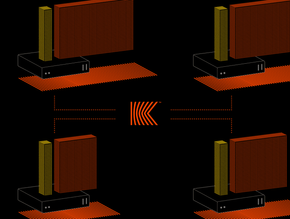What is edge computing?

Gartner defines edge computing as “a part of a distributed computing topology in which information processing is located close to the edge – where things and people produce or consume that information.”
The exponential growth of IoT devices has excelled the development and innovation of edge computing. Network technologies, such as 5G are also innovating the edge industry by creating and supporting the development of Artificial Intelligence (AI), autonomous vehicles, real-time applications and many more. But what actually is edge computing and how does it work?
Edge computing helps combine computing and data storage in a device where it is gathered instead of relying on a centralised system located thousands of miles away. It has been designed this way to reduce the latency of real-time data in order to help improve the performance of applications. It can also save companies money as they can process the data locally as opposed to it being processed in a centralised or cloud-based location.
Gateways can be set up which process data from single devices and either send data directly back to the device for any real-time applications or it can send relevant data back through the cloud in order to reduce bandwidth needs. Edge devices can range between smartphones, IoT sensors and security systems for example. Edge gateways are also considered as an edge device within an edge-computing infrastructure.
Why is edge computing important?
Not only can it save companies money but it can also save them time. One of the main benefits of edge computing is its ability to process and store data quicker, producing efficient real-time applications. It is also innovating many different industries such as smart cities, automation, virtual reality and augmented reality as many of them require fast processing speeds and responses.
Kuba Stolarski, research director at IDC stated that “With enhanced interconnectivity enabling improved edge access to more core applications, and with new IoT and industry-specific business use cases, edge infrastructure is poised to be one of the main growth engines in the server and storage market for the next decade and beyond.”
Companies such as Nvidia have started to see the importance of edge computing and have started to integrate edge technologies and AI into system modules. This will allow for better quality and quicker real-time application responses.






